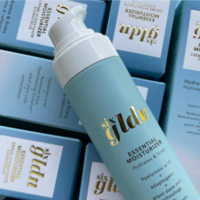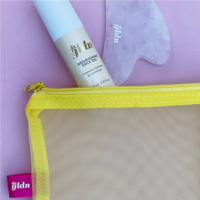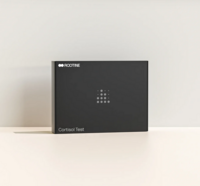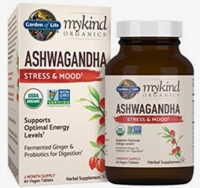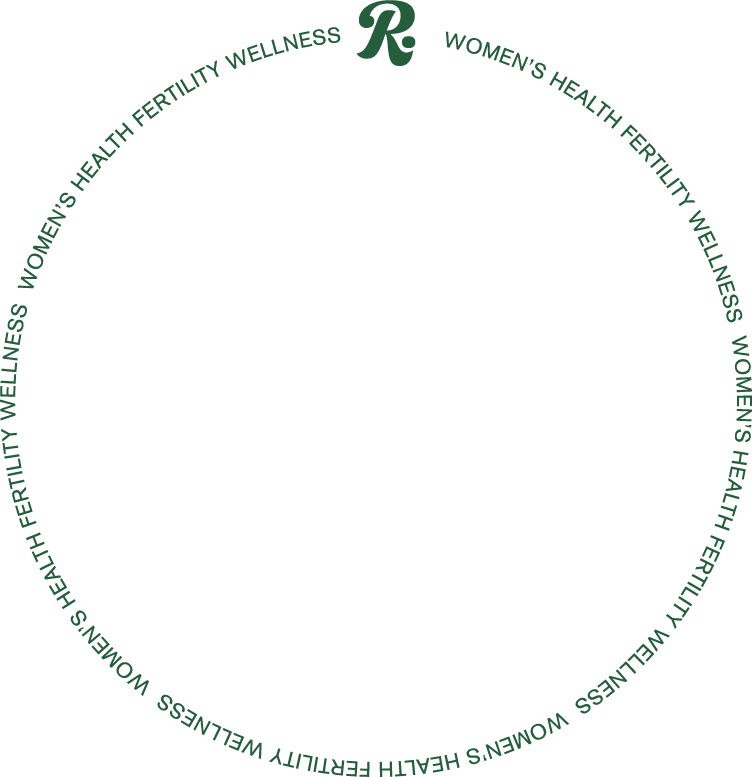We get it. It’s starting to feel like all of our belongings — from personal care products to home goods — are “out to kill us” these days. It can feel pretty exhausting and defeating when it seems like every single day we’re learning about something new that we have to get rid of because it’s supposedly “toxic.”
We feel that pressure ourselves at Rescripted, which is why we’ve put together a starting point for swapping out your conventional goods for more body-safe options. It’s not about being perfect but doing the next best thing for us.
You don’t need to throw away all of the cleaning products, food, skincare, makeup, and furniture in your house. But slowly over time, you can begin to make small changes that will add up in the long run. Your home goods and personal care items are an amazing place to start, which is what we'll get into below.
Why the need to stop using conventional products?
According to the State of California, the U.S. has over 80,000 synthetic chemicals under commercial use across consumer goods categories, and only 45% of them have been formally studied for human safety.
And according to the Endocrine Society, at least 1,000 of these or more are endocrine disrupting, but because there’s such little formal research done in this space, it’s likely this number is higher.
Aside from disrupting your endocrine system (i.e. your hormones), the variety of chemicals found in your personal care, cleaning, and food products, can lead to poor indoor air quality, which can contribute to the development of allergies and respiratory problems.
When these products are disposed of, they can also cause harm to the environment by contaminating water sources, contributing to air pollution, and disrupting wildlife spaces.
For sensitive populations like pregnant and breastfeeding women, children, and anyone with an underlying health condition, a surplus of synthetic chemicals should especially be avoided.
What is an endocrine disruptor?
An endocrine disruptor is a man-made chemical that can interfere with your body’s hormone synthesis, secretion, and metabolism because they mimic the chemical structure of naturally occurring hormones.
These “trick” your body in three main ways:
- They can block the pathway between a naturally occurring hormone and a receptor
- They can act directly on a gland, such as the thyroid, causing it to make too much or too little of a hormone
- They can mimic a hormone, causing the body to overreact or react at the wrong time
Hormones are chemical messengers for biological reactions across your body including circulatory, metabolic, and immune functions to name a few — so the body is entirely dependent on a healthy endocrine system to stay alive and well.
Because hormones act in very small and delicate amounts, minor disruptions in your levels can have negative health impacts such as decreased sperm quality, menstrual irregularities, fertility issues, immune suppression, thyroid dysfunction, and more.
Where are endocrine disruptors found?
Endocrine disruptors are found in many everyday products, including cosmetics, hygienic products like deodorant and body wash, food and beverages (and their packaging), cleaning supplies, air fresheners, candles, furniture, toys, carpet, and more.
Chemicals that act as flame retardants (often found in furniture and mattresses), synthetic fragrances, petroleum-based candle waxes, and lead-core candle wicks are also endocrine disruptors.
The main culprits to avoid:
- Atrazine: one of the most common herbicides in the world used on a variety of crops
- Bisphenol A (BPA): commonly found in can lining, plastic water bottles and containers, toys, receipts, and more
- Per- and polyfluoroalkyl substances (PFAS): a class of over 12,000 chemicals used across manufacturing and consumer good categories, including non-stick cookware, paper, foam, clothing, cleaning products, waterproof gear, and more
- Phthalates: commonly found in personal care products such as lotions and perfumes, household items like paints and air fresheners, plastics, and toys
- Polybrominated Diphenyl Ethers (PBDEs): otherwise known as flame retardants, these chemicals are used on a variety of clothing, furniture, mattress pads, and electronics
- Fragrance: because the fragrance industry is highly unregulated, manufacturers don’t have to disclose which ingredients have gone into their “fragrance”; many modern fragrances are synthetics petrochemicals derived from crude oil that may carry potential carcinogens and even “natural” fragrance falls under this boat
Here are our top 12 non-toxic household products.
Overwhelmed and don't know where to begin? Here are our top 12 "clean" household swaps:
1. Non-Toxic Bathroom Cleaner
ECOS Bathroom Cleaner ($10.20)
Blueland Toilet Bowl Cleaner Tablets ($28.99)
Mrs. Meyer's Liquid Toilet Bowl Cleaner ($5.99)
Method Bathroom Cleaner ($18.20)
2. Non-Toxic All-Purpose Cleaner
Mrs. Meyer's All-Purpose Cleaner ($25.19)
Seventh Generation All-Purpose Cleaner ($19.16)
Blueland All-Purpose Cleaning Spray ($21.99) (with 4 refill tablets)
Method All-Purpose Cleaner Spray ($15.26)
3. Non-Toxic Dishwashing Detergent
Seventh Generation Ultra Power Plus Dishwasher Detergent Packs ($24.76)
Seventh Generation Gel Dishwasher Detergent ($13.99)
Blueland Dishwasher Detergent Tablets ($22.79)
Molly's Suds Dishwasher Pods ($18.99)
4. Non-Toxic Cookware
When it comes to non-toxic cookware, look for cast iron, stainless steel, ceramic, and enamel-coated cast iron (none of these have Teflon coating on them, which you want to avoid).
Caraway Non-Stick Ceramic Baking Sheet ($45)
Caraway Nonstick Ceramic Frying Pan ($95)
Caraway Non-Stick Ceramic Rectangle Pan ($55)
5. Non-Toxic Food Storage Containers
For the best non-toxic food storage containers, look for glass, ceramic, stainless steel, or silicone (avoid plastics).
Vtopmart 8 Pack Glass Food Storage Containers with Lids ($27.49)
S Salient 18 Piece Glass Food Storage Containers with Lids ($32.79)
Bayco 8 Pack 30oz Glass Food Storage Containers ($39.99)
6. Plant-Based Candles
Look for: 100% plant-based waxes such as soy, coconut, and beeswax (avoid paraffin wax, which is petroleum-based) and wicks made of 100% cotton, hemp, or wood
Les Boy Smells Candle ($48.00)
Hemlock Park Crackling Wood Wick Handcrafted Candle ($34.95)
River Birch Almond + Honey Candle ($19.95)
Arctic Wicks Handmade Coconut Beeswax Candle ($20)
7. Non-Toxic Laundry Detergent
Seventh Generation Concentrated Laundry Detergent ($26.56)
ECOS Dermatologist Tested Laundry Detergent ($23)
Biokleen Free & Clear Natural Liquid Laundry Detergent ($34.99)
Attitude Liquid Laundry Detergent, Plant- and Mineral-Based Formula ($34.06)
8. Non-Toxic Dryer Sheets
0Molly's Suds All Natural Fabric Softener Dryer Sheets ($23.18)
Seventh Generation Dryer Sheets ($27.88)
Mrs. Meyer's Dryer Sheets ($14.95)
Biokleen Laundry Dryer Sheets ($31)
9. Non-Toxic Wood Floor Cleaner
Method Hardwood Floor Cleaner ($34.08)
Grove Collaborative Floor Cleaner Refill Concentrate ($28.99) (can be used with any refillable bottle)
Aunt Fannie's Hardwood Floor Cleaner ($13.99)
Begley's Natural Hardwood Floor Cleaner ($18.03)
10. Non-Toxic Hand Soap
Mrs. Meyer's Hand Soap ($12.81)
Everyone Liquid Hand Soap ($17.07)
Raw Sugar Hand Wash Variety Bundle ($26.99)
Seventh Generation Unscented Hand Soap ($28.36)
11. Non-Toxic Body Wash
Native Gender Neutral Body Wash ($26.97)
Raw Sugar Sensitive Skin Simply Body Wash ($29.97)
Attitude Body Wash, EWG Verified ($13.54)
Mrs. Meyer's Moisturizing Gender Neutral Body Wash ($24.32)
12. Non-Toxic Cutting Boards
When it comes to non-toxic cutting boards, look for solid wood (maple, walnut, beech, teak) free of finishes or with natural finishes such as coconut or walnut oil. Ceramic is a decent option too, but can potentially dull your blade’s sharpness.
Avoid plastic, epicurean wood fiber, and bamboo (it’s often sealed with formaldehyde).
JNE Hinoki Cypress Wood Cutting Board ($54.95)
Luxdecor One Piece Wood Cutting Board ($45.99)
John Boos Maple Wood Reversible Cutting Board ($48.95)
Where to start the "clean up"
Remember, these changes don't need to happen all at once. Start with 1-3 swaps once you run out of what you currently have, and then slowly begin adding to your "clean" arsenal from there. It’s not about being perfect, but getting 1% better over time and working within your budget. Fortunately, as the demand for non-toxic alternatives has gone up, the price point has evened out to be roughly equivalent or just slightly higher than conventional options, so you don’t have to sacrifice an arm and a leg to prioritize your health and well-being. And that is something to celebrate.
Caroline McMorrow is Rescripted's Content Manager.








